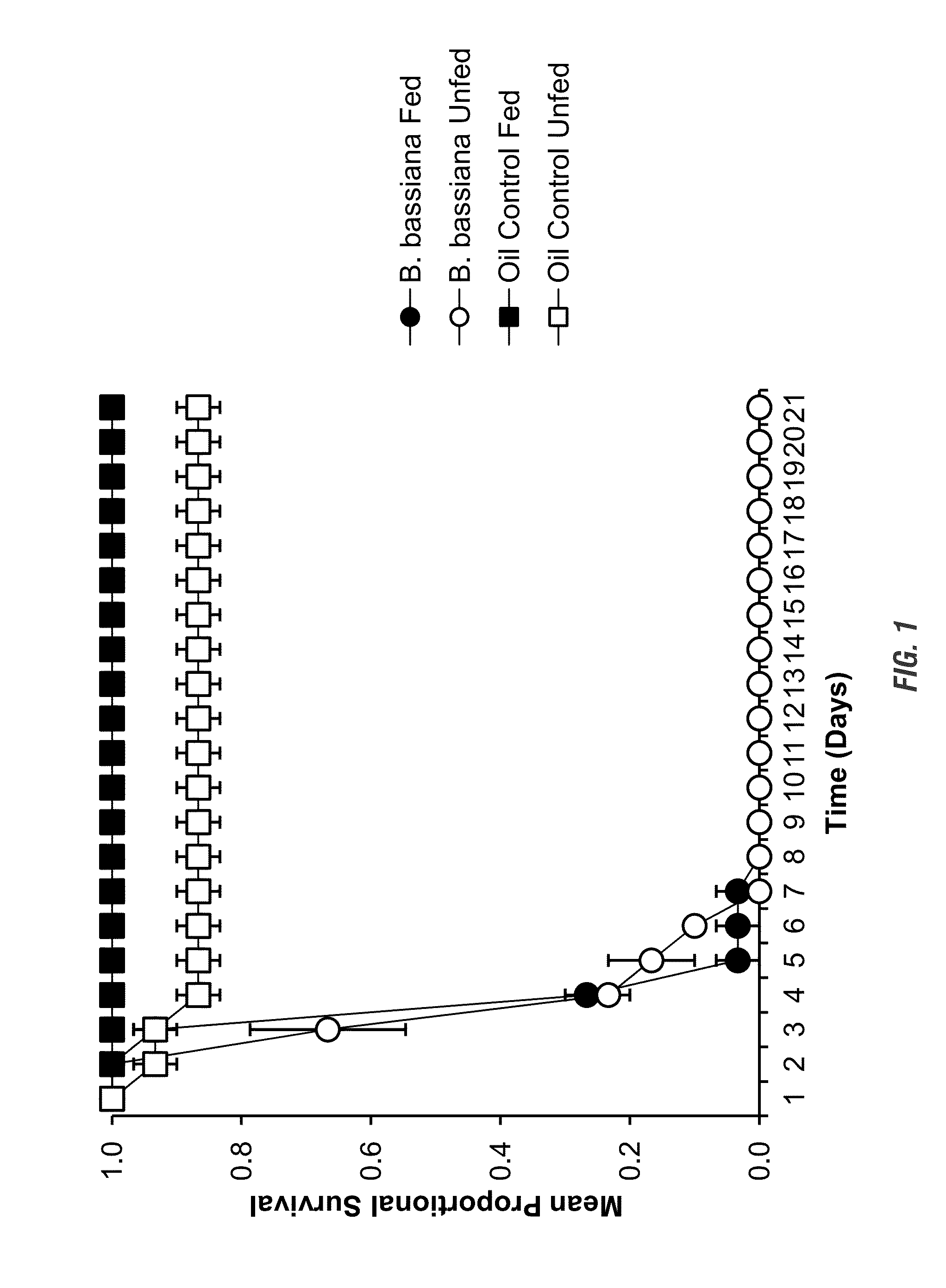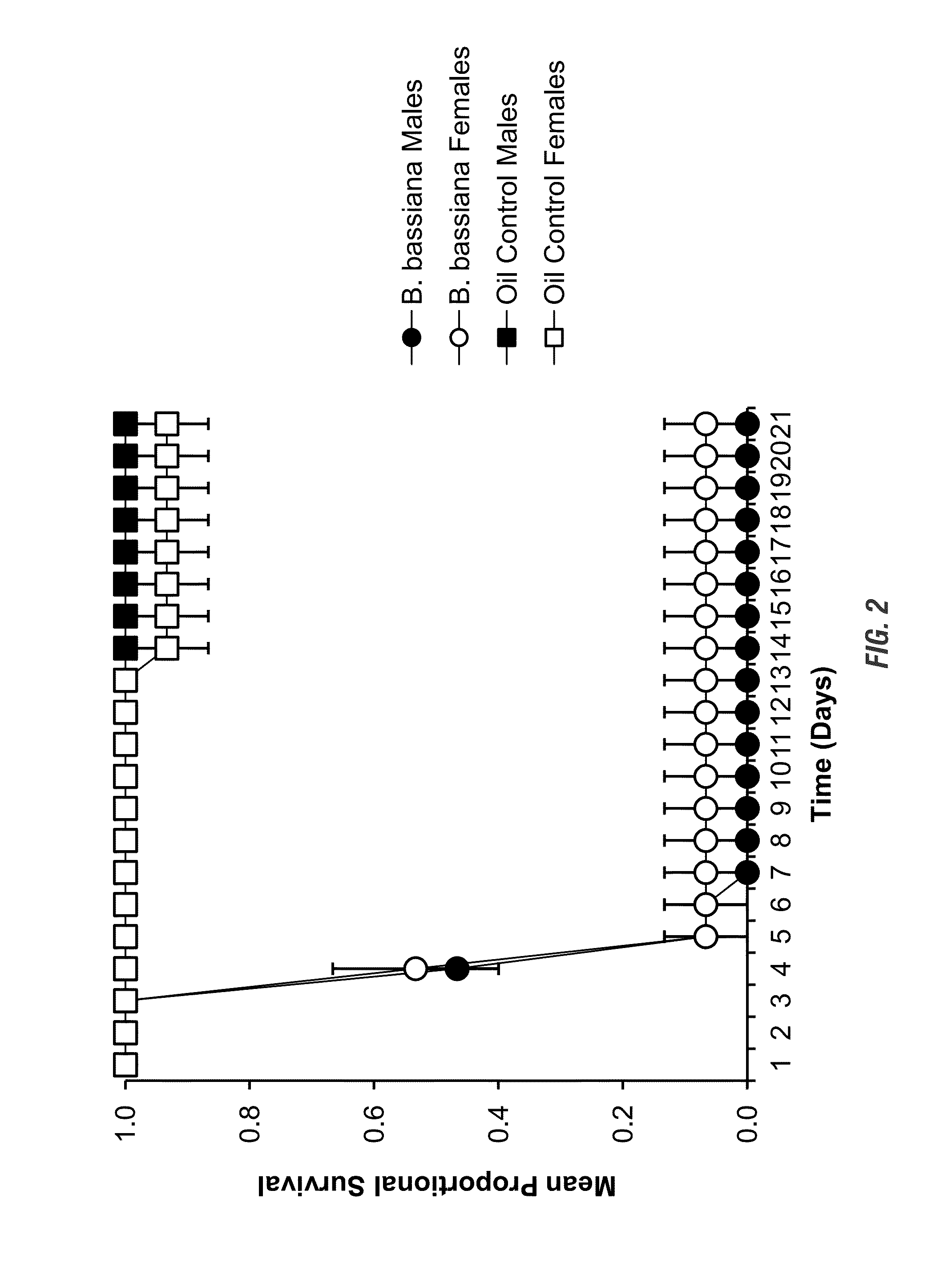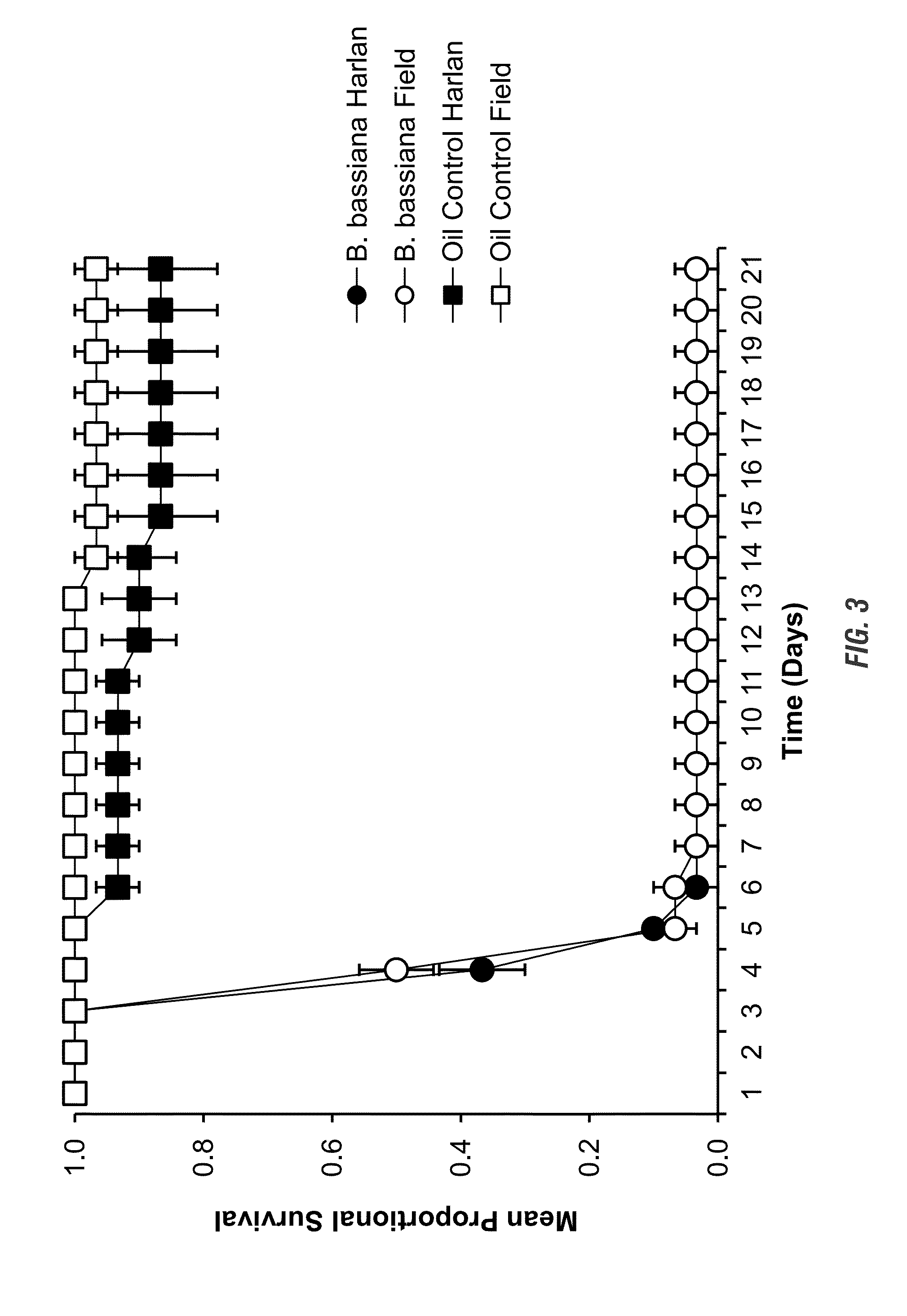Compositions and methods for bed bug control using entomopathogenic fungi
a technology of entomopathogenic fungi and compositions, applied in the field of compositions and methods, can solve the problems of increasing insecticide resistance, threatening the control efforts of bed bugs throughout, unnecessarily exposing humans and animals, etc., and achieves the effects of improving the eradication of a bed bug population, stable for extended periods of time, and effective us
- Summary
- Abstract
- Description
- Claims
- Application Information
AI Technical Summary
Benefits of technology
Problems solved by technology
Method used
Image
Examples
example 1
[0087]A series of bioassays were conducted on the human bed bug Cimex lectularius, to evaluate the efficacy of Beauveria bassiana as a residual biopesticide treatment. Populations of bed bugs were obtained and reared along with fungal isolates harvested for the subsequent testing of the efficacy of B. bassiana as a biopesticide against common bed bugs of various feeding statuses, sexes, strains, exposure substrates, and three life history stages.
[0088]Bed Bugs
[0089]A pesticide-susceptible laboratory strain of bed bugs was obtained and designated “HS” strain. The strain was originally established by Harold Harlan (National Pest Management Association, Fairfax, Va., USA) from a population collected in Fort Dix, New Jersey, USA in 1973 and has been reared in the laboratory exclusively since that time. A second strain was obtained and designated “FS”. The strain was established by Ecolab® employees in 2005 by combining specimens collected from field infestations in Minnesota, Wisconsin,...
example 2
[0129]The efficacy of Metarhizium anisopliae (strain ESF1 (EPA, 2001)) as a biopesticide against common bed bug in laboratory conditions was evaluated using standard laboratory bioassay, using fed adult bed bugs and identical methods to those described in Example 1.
[0130]The results demonstrate efficacy of M. anisopliae on Cimex lectularius. M. anisopliae is effective against bed bugs in laboratory tests, and quickly kills bed bugs with 5 days. FIG. 6 shows the comparison of efficacy of bed bug control using M anisopliae versus B. bassiana (and further shown against control as described in Example 2). The graph shows that B. bassiana provides superior bed bug control (demonstrated through mean proportional survival), however the isolate M anisopliae also provides bed bug control according to the compositions and methods of the invention.
example 3
[0131]Further analysis demonstrating the efficacy of the horizontal transmission according to the invention was completed. Horizontal transmission of B. bassiana conidia following exposure of bed bugs to a sprayed surface (applied at a rate of 3×106 conidia / cm2 using an airbrush sprayer) was conducted according to methods of Example 1 (and as further described herein). One hundred twenty adult, mixed sex bed bugs were removed from the FS colony, fed, and placed into 30 mL diet cups in six groups of 20 and left overnight. The following day, ten bed bugs were removed at random from each group and exposed to either treated jersey cotton or unsprayed jersey cotton (3 replicates each) and allowed to remain in contact with the substrate for 1 hour. After exposure, bed bugs were returned to their respective diet cups (e.g. artificial harborage) to comingle with the 10 “clean” (unexposed) bed bugs. A sterile filter paper harborage was provided, wherein 20 bed bugs were in each artificial ha...
PUM
 Login to View More
Login to View More Abstract
Description
Claims
Application Information
 Login to View More
Login to View More - R&D
- Intellectual Property
- Life Sciences
- Materials
- Tech Scout
- Unparalleled Data Quality
- Higher Quality Content
- 60% Fewer Hallucinations
Browse by: Latest US Patents, China's latest patents, Technical Efficacy Thesaurus, Application Domain, Technology Topic, Popular Technical Reports.
© 2025 PatSnap. All rights reserved.Legal|Privacy policy|Modern Slavery Act Transparency Statement|Sitemap|About US| Contact US: help@patsnap.com



